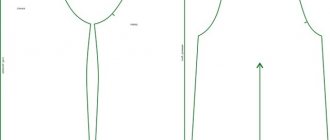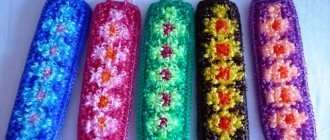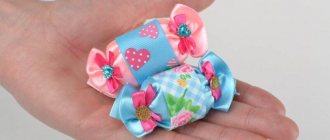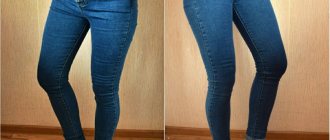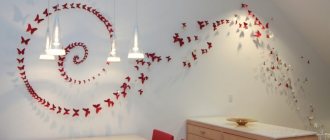This article describes how to sew curtain tape to tulle, curtains, and drapes.
To make a new interior in a room, it is not necessary to make expensive repairs or change furniture. It will be enough to buy new curtains or tulle and decorate the window in the room with them. Such decoration using new textiles will add new accents to the interior and make it stylish and beautiful.
Many women buy new tulle and prefer to design the textiles themselves, as well as sew on the ribbon. In this article we will tell you how to choose the right ribbon for tulle and how to sew a wide or narrow ribbon. Read the tips, watch the video and you will be able to drape the window beautifully yourself.
Which curtain tape is best for tulle: how to choose?
Which curtain tape is best for tulle: how to choose?
Curtain tape is a braid with special twisted cords sewn along its entire length. It is an excellent foundation for creating any folds. If you want to make beautiful folds on the tulle, you do not need to acquire special fashion designer skills; sew on curtain tape and beautiful window drapery will be ensured.
Which curtain tape is best for tulle: types of tape
Which curtain tape is best for tulle and how to choose it? Adviсe:
- First, decide on the type of folds you want to see on your tulle : waffle folds, pencil folds, bow folds, Flemish folds. But, if these names don’t mean anything to you, then just take several types of ribbons and assemble them. You will immediately see what kind of fold pattern you will get in the end.
- Remember that the folds on tulle will not be particularly visible, since the fabric is weightless and airy. But the general relief will still be visible.
- If you have made unusual and beautiful folds on the curtains, then you don’t have to bother with the tulle and choose a tape of uniform gathering.
- For tulle, use clear fishing line tape. The same tape is used for thin curtains.
- The type of curtain tape determines the amount of tulle. For convenience, the ratio used is 1:3, 1:2, 1:2.5 and 1:1.5. These figures indicate that for 1 meter of window opening you will need, for example, 3 meters of tulle plus another 10 centimeters.
To make a plain tulle look beautiful on a window, you should use a coefficient of 2.5 or 3, since with a coefficient of 1.5 the tulle will be barely gathered.
Step-by-step instruction
Take measurements and cutting. First you need to take measurements of the curtain itself. To calculate the length of the braid, you will need to add another 25 centimeters to the obtained value. This will be required for additional bending and to avoid shrinkage during washing.
- Finish the edges. To prevent the tulle from fraying, you need to bend the edges to the wrong side. If it crumbles a lot, you need to roll it in several layers.
- Sweep the tape and curtain one at a time. The secret of how to sew curtain tape to tulle efficiently lies in your skill. This way they will snuggle better.
- Butt. You need to attach the strip 5 millimeters below the edge of the curtain and bend it.
- Darn. After this, you need to carefully remove the running seams.
- Sew on the sides. This can be done with a sewing machine. It is much faster, easier and does not require hand embroidery skills. If it is not there, use a needle and thread. The stitch should be made moderately dense, even, without distortions. The slightest deviations will lead to a sloppy look.
- Have you bought an apartment in a new building? We are doing renovations!
- Apartment interior trends in a modern style: the most current ideas from designers (70+ photos)
- Design of a toilet in an apartment: the best ideas and useful tips (60+ photos)
Once you've sewn on the ribbon, it's important to take care of the drapery. High-quality ribbons can be washed in a machine without tearing them off. You just need to loosen the fastening laces.
If you did everything correctly, neat folds will form that can be corrected and adjusted. The only drawback is that there are sloppy, protruding laces on the sides that can spoil the look. It is better to make small pockets of fabric on the reverse side in which you can hide them. They need to be made from the same fabric as the curtain. This way they will look neat.
There are holes on the ribbon that cling to the hooks on the cornice.
Remember that before each washing and ironing you will need to straighten the folds, otherwise severe shrinkage and complete loss of the function of the strip is possible.
How much curtain tape is needed for tulle?
How much curtain tape is needed for tulle?
The meter of the tape is calculated depending on how much tulle you need to drape. So, how much curtain tape do you need for tulle? Use the coefficients described above. The second number in the coefficient indicates how many meters of fabric will be needed to cover 1 meter of opening. For example, to buy a tape with a ratio of 1:3 for a window with a width of 2.5 meters, you will need 7.5 meters of tulle and the same amount of braid.
If you have already purchased curtains, then select a braid with a suitable coefficient. To do this, divide the width of the fabric by the width of the opening. For example, a curtain is 4 meters, and a window opening is 2 meters, then you need to divide 4 by 2. The result is a ratio of 2 or 1:2.
Types of curtain tape and its correct choice
Curtain tape is a strip of fabric that is sewn to the tulle or curtain from the edge of the reverse side. It then helps form the folds on these decorative materials. It is necessary to take into account the importance of choosing it correctly so that it does not become a foreign element after fixation on the tissue. Therefore, you need to take into account that on dense materials they sew braid of the same structure, and for thin tulles they opt for transparent fittings. The width of this tape also depends on the structure of the fabrics. The thinner it is, the more organic the narrow braid options will look.
There is also a difference between curtain tapes in terms of functionality. There are options for this fitting for cornices consisting of pipes. In this case, the braid is simply put on the pipe. It is called "Velcro". And there is a vertical tape that is designed specifically for French and Roman curtains.
To choose accessories for sewing to tulle, you need to know these simple tips:
- If braid is needed to finish the edge of tulle fabrics, it should be transparent to avoid it standing out against the background of thin fabric. A ribbon with a denser structure is suitable for sewing to a curtain;
- The width of the fittings affects the complexity of the drapery and the intricacy of the fold patterns. If it is narrow, it is suitable for thin materials. This is considered a braid that is 2-4 cm wide and 4-10 cm wide;
- Another nuance is the number of rows of loops. They also have practical significance: with the help of rows it is possible to adjust the length of curtains or tulle. For example: if the product is shorter than we would like, then it is better to place it on the bottom row of loops. The long one goes to the top;
- Each fitting has its own assembly factor. This value is calculated by measuring the width of the curtains or tulles in the unassembled state to the already draped material. This parameter is designated by the letter “K”. For ordinary drapery this coefficient will be 1.5, and more intricate patterns may have a value of 3;
- Another type of marking indicates what fabric the fittings are intended for. If there is an o, then it indicates the versatility of the curtain tape, “Z” is for thick, “F” is for light, and “/Z” is for transparent. Organza products require a “T” braid.
Also, when choosing a ribbon, the color scheme is important. For opaque material, light or white braid is used, and for translucent fabric, nylon fittings are used.
How to properly assemble tulle on a curtain tape: rules, tips, photos
How to properly assemble tulle on a curtain tape: rules, tips, photos
Draping the fabric is the most crucial moment, so it is important to pull the tulle or curtain correctly. How to properly assemble tulle on a curtain tape - rules and tips:
- It’s better to pull together together , so ask someone to help. If there are several cords, then they need to be pulled together on both sides.
- When tightening, the cord will get in the way , since it is very long, so tie a piece of cardboard and wind the cord around such a bobbin. You can also buy a special retainer in the store that is used for these cases.
- While tightening, measure the curtain or tulle to achieve the desired width. It is better to do this with a soft measuring tape.
- When you have the desired width of the curtain , fix the edges and straighten the folds. Hang curtains or tulle on hooks.
How to properly assemble tulle on a curtain tape: rules
Important: For the curtain to look beautiful, the distance between the hooks must be at least 10 cm.
How to properly assemble tulle on a curtain tape: rules, tips
Self-drapery of curtains and tulle will help you decorate the room yourself, without resorting to the services of specialists. Give your interior an elegant and finished look, saving on the services of a fashion designer, especially since this is easy to do with different types of curtain tape.
Photo of tape firmware options
Below you can see photo examples of beautiful tulle with ribbon. Before you sew the curtain tape to the tulle, pay attention to how the professionals do it.
Tips for beginners
Beginners often have problems when filing. A large curtain size and unaccustomed hands are not your best friends, so it is unlikely that you will be able to avoid mistakes.
But you can give some useful tips:
- Textile adhesive tapes are not suitable for wool fabrics. The curtains will lose elasticity in this area and the drapery will be uneven.
- Always hem from the wrong side, not from the right side. And try not to make a mistake, otherwise everything will have to be redone.
- Always test your machine on a separate section of fabric before hemming. Products often suffer serious damage.
You can also watch video instructions on how to tighten curtain tape. This way the drapery will be smooth without crooked folds.
How to hang curtains
Housewives who know various methods of attaching curtains independently decide how best to hang curtains on a strip. Drapery options:
- “pencil”, which is suitable for veils, the material hangs almost without gathering;
- “columns” are rows of folds of the same size, the density is determined by the tension force of the cord;
- uneven waves-buffs are made on curtains with lurex or a metallic sheen; the curtain tape will need to be wide, with 4 threads;
- a medium-density curtain is gathered in a “fan” pattern;
- the beautiful butterfly relief with a diamond-shaped screed looks elegant;
- “glass” or “glass” with a lower double tuck of ribbon-braid;
- Counter folds are practiced on soft woolen fabrics.
The braid is selected taking into account the assembly coefficient, the number of cords on which the fit density depends.
Methods for attaching weights
If you wish, you can sew your own curtains with additional weights. A load, fabric to match the color of the curtains, a sewing machine, threads, and scissors are prepared in advance. Measurements are taken with a measuring tape or tape measure. The method of attaching coins or wire depends on the weight of the web.
Tulle and lightweight materials - use weights weighing 12-22 grams.
The sequence of internal fastening of the weighting material to the lightweight fabric:
- If the curtain is light in weight, it is recommended to sew the strips on the sides. It is enough to take 2 parts weighing no more than 22 grams.
- Each element must be placed in a fabric pocket, which is sewn separately.
- A small cut should be made on the back side of the bottom hem of the curtain, keeping an interval of 5 cm from the bottom. If the material is not tucked, then it is allowed to use curtain tape.
- A pocket with a weighting agent is inserted into the resulting cut and sewn to the curtain.
To insert the parts, preliminary preparation of the bottom edge or side of the curtain is required.
When the curtain is made of dense, heavy material, the weight needs to be sewn in in a different way. On the reverse side at the bottom there are several pockets into which coins or metal balls are inserted. The folded bottom of the curtain can serve as a place for placing the parts.
Curtain tape is sewn to cover the holes
It is important to secure the weights so that they do not fall out when the curtain is in an upside-down position. To fix a wire or chain, you must first fold the fabric 10 cm and stitch it
A weighting agent is threaded into the resulting hole.
To prevent the load from shifting, the side edges of the hem are sewn up.
It is not necessary to sew a special pocket to fix the curtains in one position. Frequently, loads are attached to the outside of the curtains. In this case, weights for curtains or products with holes are used. From scrap materials, old coins will come in handy. The bottom of massive curtains is decorated with fringe or pendants, but such a detail is appropriate in classic or retro-style interiors.
Another weighting option in the form of a special fringe sheet attached to the bottom is suitable for massive heavy curtains.
The weighting material on organza curtains does not need to be placed in a special pocket. Here a special cord is used to match the curtains and is sewn on the back side of the fabric. It is prohibited to use chains and slats for curtains made of organza.
To sew weighting to organza, the material chosen for balancing is sewn directly to the bottom edge without forming a pocket.
Ideas for sewing ribbon
Help the site, share with friends
Let's discuss this article together:
Click to cancel reply.
How to sew braid to tulle
In this option, a thin ribbon is suitable. The first step is to calculate the parameters of the tulle and braid. This is easy to do by multiplying the length of the cornice by the material assembly factor with the addition of 25 cm for deformation and processing.
There are also such types of ribbons as the column, which forms 1 to 2 gathers, and the Austrian ribbon, which forms various patterns and forms folds into “puffs”, “butterflies”, “glasses”.
A tape of 1.5-4 cm is considered narrow. It is necessary when the cornice is covered, when the hooks are covered with a special decorative strip.
When choosing a wide braid, follow the following sequence of actions:
- Carefully process the tulle on all sides except the top. If the material is loose, then additionally overlock it with an overlocker. You can pull back three threads and cut straight.
- Fold the tulle on top with the wrong side to the width of the curtain ribbon and iron.
- Apply tulle braid to the finished fold, stepping back up to 1.5 cm from the fold. The more complex the tails, the greater the distance required. Make sure that the braid does not protrude beyond the border of the canvas.
- Secure the ribbon with pins and baste it to the tulle.
- Sew the tape on the machine. The number of seams should match or be greater than the number of rows on the braid. To avoid creases, the material should be slightly stretched and always stitched in one direction.
- Finish the side edges and remove the basting.
Narrow tape is also used for short curtains made of lightweight fabrics.
If the braid is narrow, the upper cut is folded inside out by 2 cm and then stitched by hand. The curtain tape is secured with 5 mm pins. from the top edge. Then sew on in any convenient way
It is important to remember that the loops must be on the outside of the ribbon to secure hooks or rings
Just as there are many types of curtain tapes, there are also many options for decorative types of folds.
Note! When working with tulle, it is necessary to avoid unnecessary holes from needles and pins, as the material can become deformed. Tulle is an obedient material, and many novice seamstresses begin to “get their hands on it” with it.
Methods for sewing curtain accessories
Many people make the main mistake in this process - they purchase accessories before deciding on the fabric for the curtains. If the curtain is already in stock, then only then is it worth going for the tape.
It is important to make sure that the length of the ribbon is sufficient, taking into account all the folds and features of the cut. It's better to take extra. It is also good to have an idea of the end result in order to choose the correct width of the fittings and the shape of the result.
It is also worth paying attention to the material of your canvas. If it is tulle, then you should choose the appropriate ribbon - porous, transparent. For heavier fabrics, you can choose denser fittings.
Important! Often, small strings of thread are built into the tapes, designed to further tighten the structure. Such harnesses cannot be sewn or crossed with a seam if you plan to use them.
Before the sewing process itself, you need to make sure that the edges of the fabric are processed and that the structure will not lose its shape due to deformation during further work. If the edges of the fabric are not ready for work, then it is worth unraveling several rows of threads from the raw edge. To do this, you can use a needle. Then trim a little with scissors and hem.
For a better result, you can use a fabric tape designed specifically for processing fabric edges.
Should you sew the ribbon to the curtain yourself or use the services of a professional?
Only you can find the answer to this question yourself. In fact, there is nothing complicated in the process of processing curtains yourself if you have all the necessary materials for this.
Thus, it is worth “getting your hands on” with a material such as tulle. This fabric is much easier to process and is unpretentious to minor miscalculations and mistakes.
You will need a minimum amount of practice in order to quickly get high-quality results from your work. If you want to learn this faster, then you should carefully listen to all the advice in this article.
Which blinds are best for the kitchen?
How to glue ceiling cornices
Peculiarities
To attach curtains to curtains or ceiling cornices, fastenings are required. Fittings are made from various materials:
- metal-plastic;
- non-ferrous metal;
- aluminum;
- become;
- light and durable polymer.
Hooks or rings usually come with curtain rods. Toothed crocodile clips are used for heavy materials, clips are used for organza and tulle.
How to properly prepare the material
In order to be able to beautifully sew a ribbon to a curtain or tulle, and the result of the work will not disappoint you, you need to familiarize yourself with some of the subtleties of the process. When bending the tape, leave 3 cm on each side. Since this braid shrinks, it is measured with a reserve and then carefully steamed. The same is done with the fabric to which the fittings will be sewn. In this case, you can no longer expect negative consequences from shrinkage. The tape must be sewn loosely; neither the threads nor the material should be pulled.
Important! For tulle fabrics, it is advisable to purchase transparent curtain tape, and it should also have a high gathering coefficient.
When choosing a tape, you need to carefully examine the product, and if you see its large waviness, then you can already conclude that the quality of this material is low. Such fittings will not last long and will quickly become unusable.
